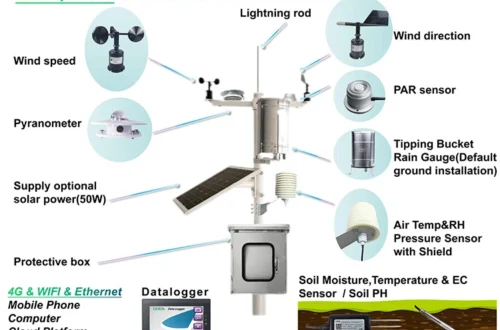Thermal Vision: Unveiling the Invisible World Through Heat Signatures
# Thermal Vision: Unveiling the Invisible World Through Heat Signatures
## Introduction to Thermal Imaging
Thermal cameras, also known as infrared cameras, have revolutionized the way we perceive the world around us. Unlike traditional cameras that rely on visible light, thermal cameras detect infrared radiation emitted by objects, allowing us to see heat signatures that are otherwise invisible to the naked eye.
## How Thermal Cameras Work
At the heart of every thermal camera is a sensor that detects infrared radiation. This sensor converts the detected radiation into an electronic signal, which is then processed to create a thermal image. The resulting image displays variations in temperature, with warmer areas appearing brighter and cooler areas appearing darker.
### Key Components of a Thermal Camera
– Infrared Detector: Captures infrared radiation.
– Lens: Focuses infrared radiation onto the detector.
– Signal Processing Unit: Converts the detected radiation into a thermal image.
– Display: Shows the thermal image to the user.
## Applications of Thermal Cameras
Thermal cameras have a wide range of applications across various fields. Here are some of the most notable uses:
### Security and Surveillance
Thermal cameras are extensively used in security and surveillance systems. They can detect intruders in complete darkness, through smoke, and even in adverse weather conditions, making them invaluable for perimeter security and monitoring.
### Building Inspections
In the construction and maintenance of buildings, thermal cameras are used to identify heat leaks, insulation defects, and moisture intrusion. This helps in improving energy efficiency and preventing structural damage.
### Medical Imaging
Thermal imaging is also used in the medical field for diagnostic purposes. It can detect abnormalities in blood flow, inflammation, and even certain types of cancer by visualizing temperature variations in the body.
### Wildlife Monitoring
Researchers use thermal cameras to study wildlife, especially nocturnal animals. These cameras allow for non-invasive observation, helping scientists understand animal behavior and population dynamics without disturbing their natural habitat.
## Advantages of Thermal Cameras
Thermal cameras offer several advantages over traditional imaging methods:
– Visibility in Complete Darkness: Thermal cameras do not require any visible light to function, making them ideal for nighttime operations.
– Penetration Through Obstacles: They can see through smoke, fog, and light foliage, providing clear images in challenging environments.
– Non-Contact Measurement: Thermal cameras can measure temperature from a distance, making them safe and convenient for various applications.
## Challenges and Limitations
Despite their numerous advantages, thermal cameras do have some limitations:
– Cost: High-quality thermal cameras can be expensive, limiting their accessibility.
– Resolution: Thermal images generally have lower resolution compared to visible light images, which can affect detail clarity.
– Environmental Factors: Extreme temperatures and humidity can affect the performance of thermal cameras.
## Future of Thermal Imaging
The future of thermal imaging looks promising, with ongoing advancements in sensor technology, image processing, and artificial intelligence. These developments are expected to enhance the capabilities of thermal cameras, making them more affordable, higher resolution, and even more versatile in their applications.
### Emerging Trends
– Integration with AI: Combining thermal imaging with AI algorithms can improve object recognition and anomaly detection.
– Miniaturization: Smaller, more portable thermal cameras are being developed for consumer and industrial use.
– Enhanced Resolution: Advances in sensor technology are leading to higher resolution thermal images, providing greater detail and accuracy.
## Conclusion
Thermal cameras have opened up a new dimension in imaging, allowing us to see the world in terms of heat signatures. From security to medical diagnostics, the applications of thermal imaging are vast and continually expanding. As technology advances, we can expect thermal cameras to become even more integral to our daily lives, unveiling the invisible world in ways we never thought possible.
Keyword: thermal camera


